Indonesian food is synonymous with sambal (chili sauce). It is incomplete for Indonesians to eat food without the addition of sambal. Therefore, there are various kinds of Indonesian chili sauces from each region. Here are various Indonesian chili sauces that are really distinctive. Which one is your favorite?
20 KINDS OF FAMOUS TYPICAL INDONESIAN SAMBAL
1. Sambal Bajak
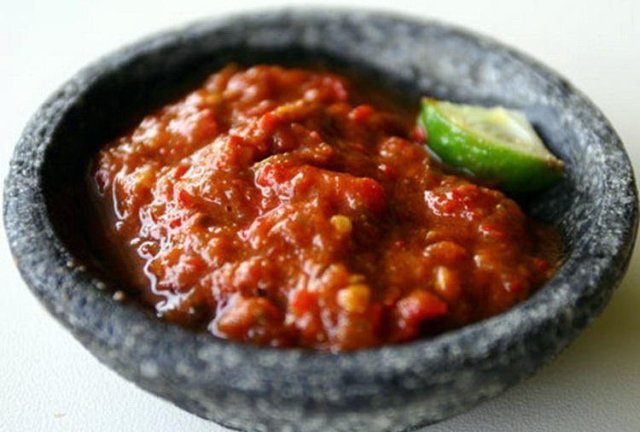
Photo by Palapa News
This one is easiest to find in East Java or Central Java. Although using the word ‘bajak’ (pirate), this kind of sambal has nothing to do with pirates. Many say the name was given because this sambal was once a menu served by the wives of farmers who were plowing the fields. The character of the chili sauce is sticky with spicy and sweet notes. Apart from the fact that it’s not too spicy, the sambal bajak is always served cooked and already sautéed.
2. Sambal Terasi
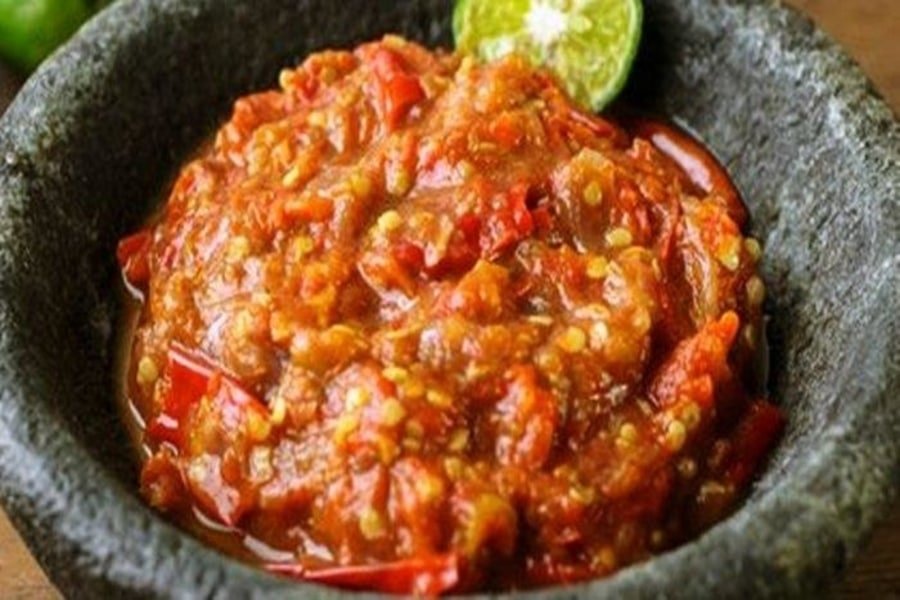
Photo by Kuliner Kota
Not everyone likes this type of chili sauce. The aroma of the chili paste is pungent for some people. But for those of you who really like shrimp paste, this chili sauce is certainly the one that you shouldn’t miss. As the name implies, the main ingredient of this chili is shrimp paste. When processed into chili sauce, the shrimp paste will be mashed with red chili, cayenne pepper, red onion, garlic, salt, Javanese sugar, and tomatoes to make it taste fresher.
3. Sambal Matah
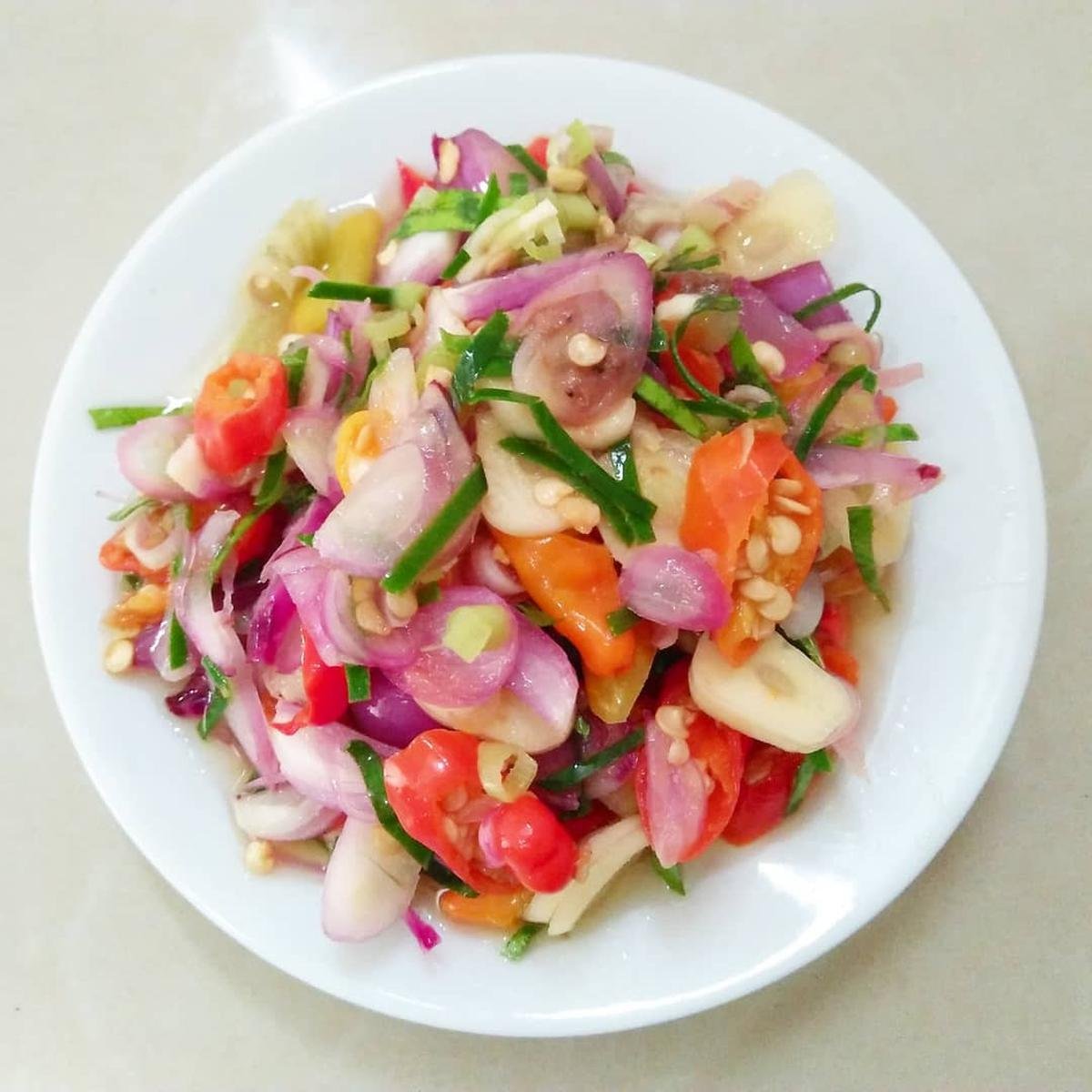
Photo by Liputan6
Sambal matah becomes a staple in Bali. The spicy taste of sambal matah is very pronounced because this chili sauce is not cooked, let the ingredients be raw. Red chilies, shallots, garlic, lemongrass, lime leaves, salt, and oil are mixed together to make this Balinese sambal matah.
4. Sambal Dabu-dabu
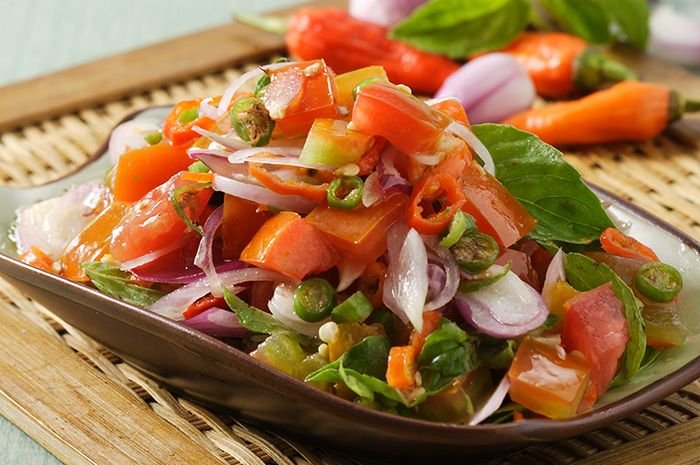
Photo by Grid.id
Manado’s signature dabu-dabu sauce is every spicy lover’s favorite. The appearance is not much different from the sambal matah because this chili sauce consists of various ingredients that are cut into pieces. The difference is, dabu-dabu sauce does not use lemon grass, shrimp paste, lime leaves, and garlic. The main ingredients are tomatoes, red cayenne pepper, shallots, salt, scallion stems, and lime. Sambal dabu-dabu is usually served by pouring it over dishes such as fish, chicken, or beef.
5. Sambal Roa
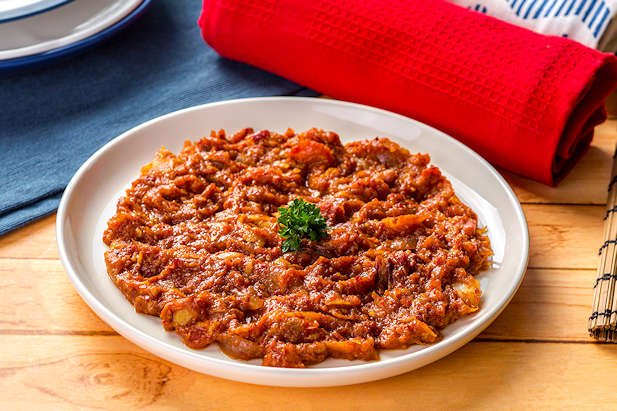
Photo by Dapur KOBE
One of the most favorite foods from Manado is roa. Different from other chili sauces, there is something special about this type of chili sauce, namely the presence of roa fish in it which adds to the extraordinary savory taste. To make sambal roa, smoked roa fish will usually be mashed with spices, tomatoes, and chilies. Because of its popularity, this chili sauce is now widely sold in bottles and can be obtained throughout the region.
6. Sambal Ijo
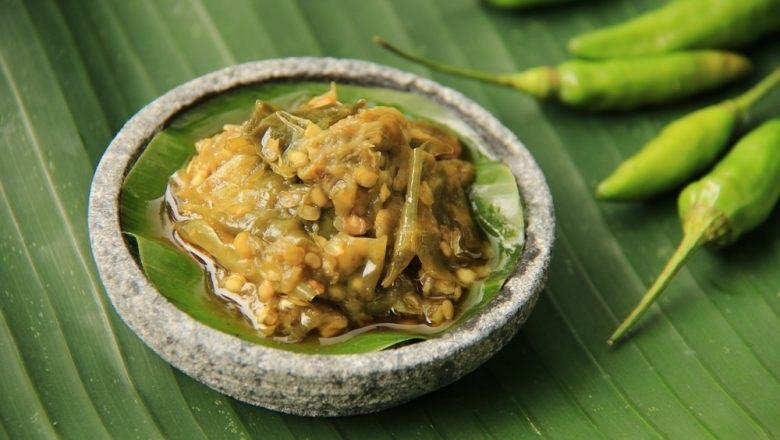
Photo by masakapahariini
Sambal in general has a red color that adds to the taste. However, this one sauce is actually different because the color is green. This sambal comes from Padang, the word green is a local language that refers to the color of the chili sauce, which is green. The main ingredient for making this chili sauce is green chili. The concoction itself consists of green chilies, shallots, garlic, and green tomatoes. The taste that you can expect to get from green chili sauce is a savory and oily taste. If you are still unfamiliar with this chili sauce, you can often find it at Padang restaurants.
7. Sambal Andaliman
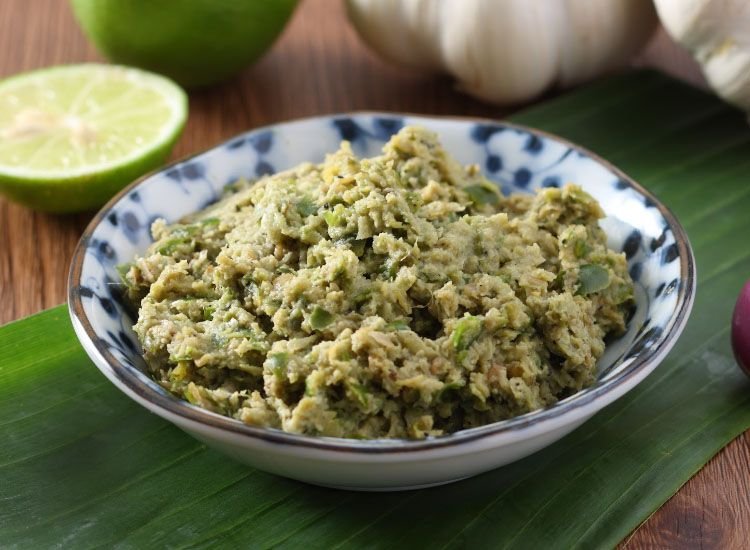
Photo by GRID.ID
This sambal comes from Tapanuli, North Sumatra. The main ingredient of this chili sauce is andaliman. Andaliman is a spice in the form of small fruits similar to fresh pepper. If eaten, andaliman will leave a spicy bitter taste on the tongue. This taste is the hallmark and uniqueness of sambal andaliman.
8. Sambal Bawang
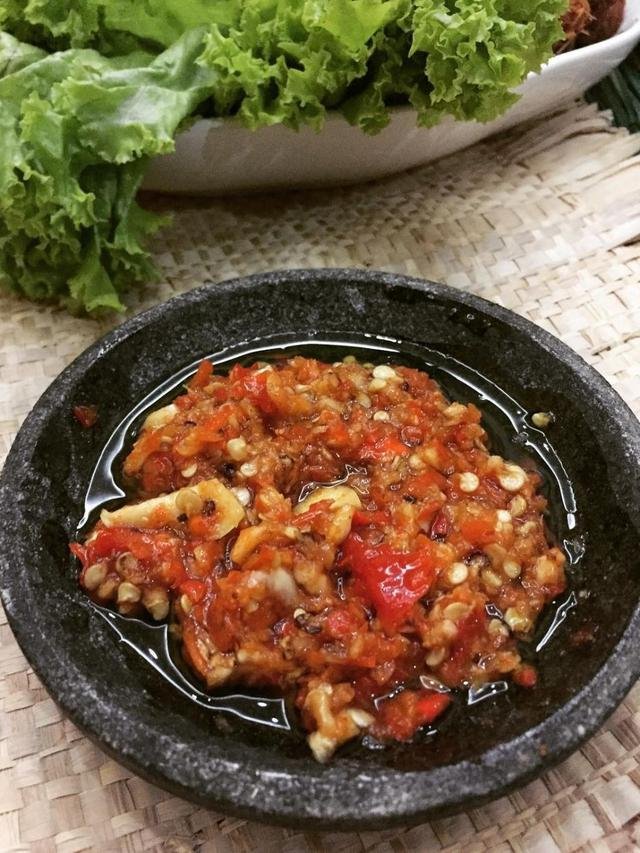
Photo by Liputan6
If you are looking for a chili sauce that is easy to make at home, sambal bawang is the answer. The ingredients are easy to find, namely cayenne pepper, garlic, onion, salt, sugar, and shrimp paste. All the ingredients are pulverized until smooth, then sauteed. The taste of this chili sauce is known to be very spicy and can satisfy your taste buds, spicy food lovers.
9. Sambal Dadak
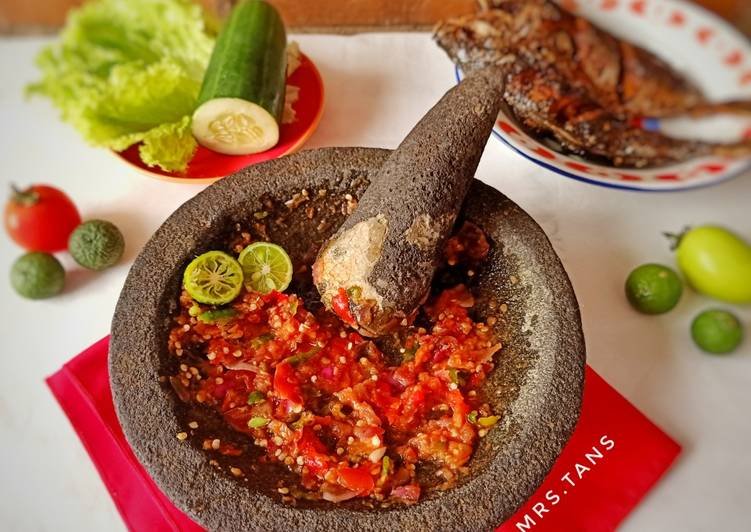
Photo by Serba Sambal Sedap
You will usually find Sambal Dadak at Sundanese restaurants. This super spicy chili sauce is best served with tutug oncom rice, fried chicken, or fresh vegetables. It’s not difficult to make this type of chili sauce because you only need large red chilies, red cayenne pepper, grilled shrimp paste, shallots, tomatoes, brown sugar, salt, and lime juice. All the ingredients are then kneaded but don’t make it too smooth so that the spicy sensation will be more pronounced.
10. Sambal Tomat
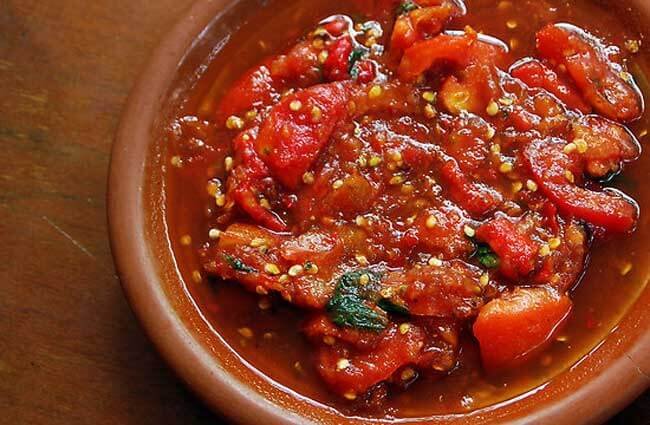
Photo by Resepkoki.co
If you don’t like spicy food and don’t like the smell of shrimp paste, you can taste the tomato sauce. This type of chili sauce is widely served in the area of the island of Java. The main ingredient is definitely tomatoes, so it’s not too spicy. The texture of tomato sauce usually tends to be watery because of the tomato water juice. It tastes quite fresh and there is a sweet and sour sensation. Very delicious when enjoyed with warm rice and side dishes.
11. Sambal Mangga
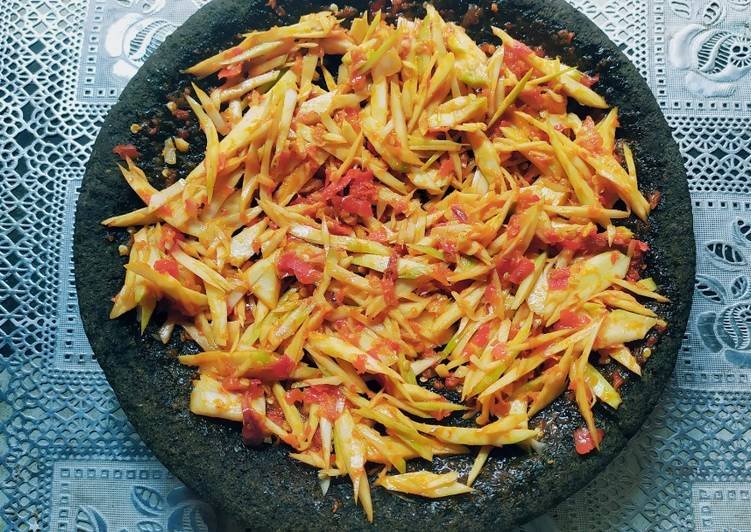
Photo by Mari KIta Masak
This sambal is unique with a fresh taste. In the chili concoction, unripe mango is added which gives a slightly sour, fresh taste that is unique to the chili. In addition, unripe mango also gives texture to a spicy chili dish. This sambal is best served with seafood because it is refreshing. When the mango season arrives, this chili sauce is perfect for making at home.
12. Sambal Tempoyak
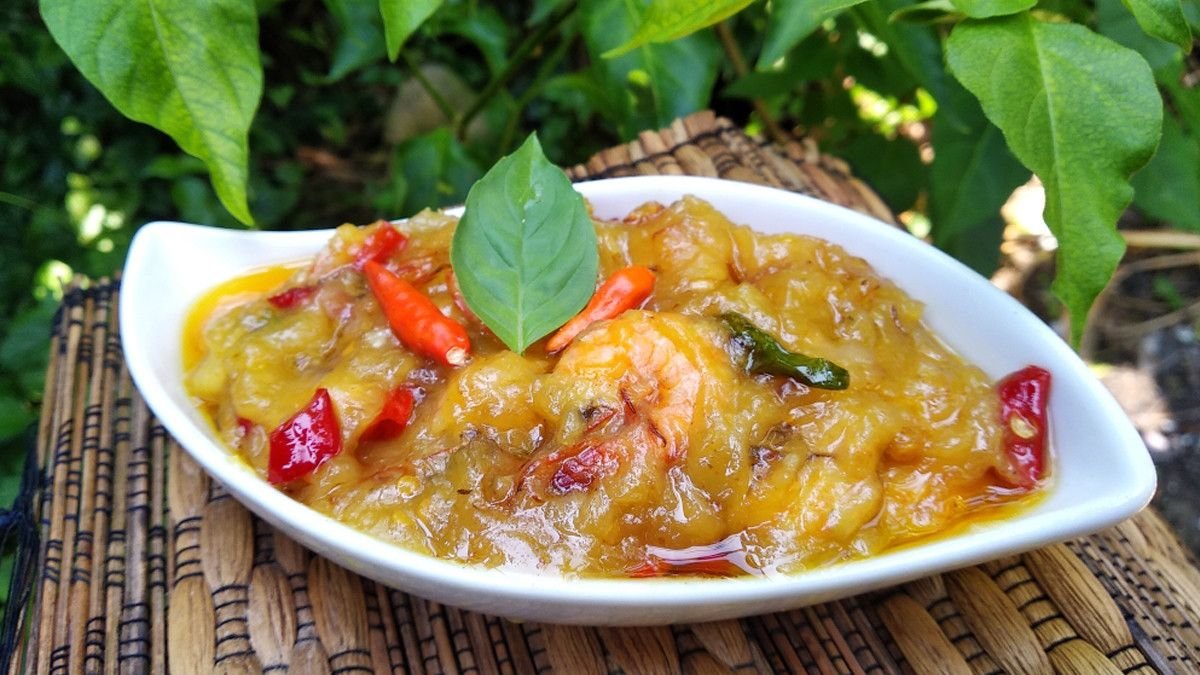
Photo by KlikDokter
This type of chili sauce is quite rare to find on the island of Java, but its name is popular in South Sumatra or Jambi. The uniqueness of the tempoyak sauce lies in the mixture of durian fruit in it. The durian used is fermented durian which is also known as tempoyak. Well, to make tempoyak sambal, you will need red chili, cayenne pepper, turmeric, anchovies or grouse, sugar, salt, and of course tempoyak.
13. Sambal Colo-colo
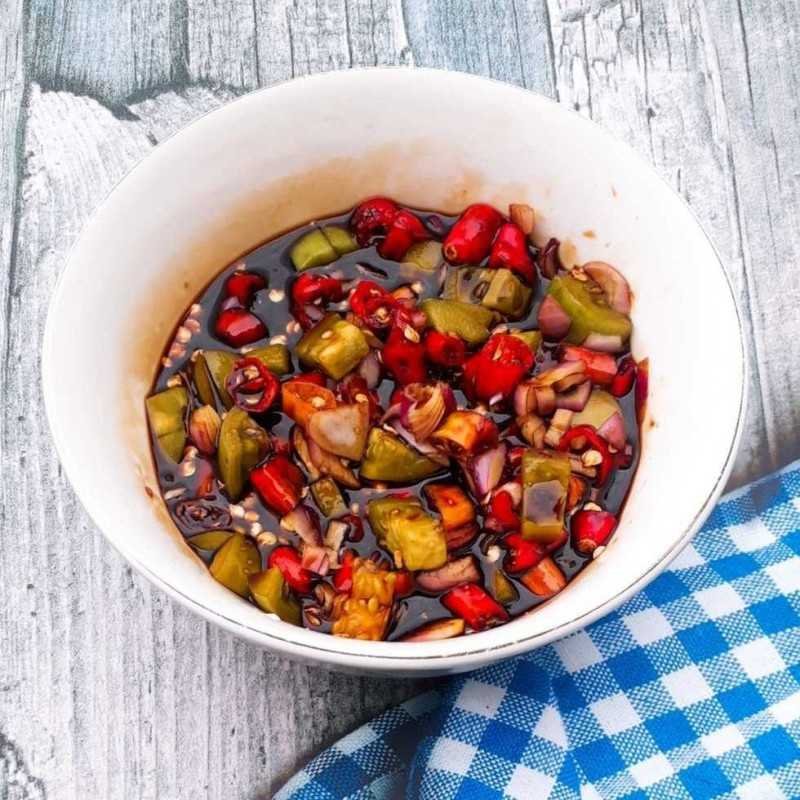
Photo by Yummy App
Sambal colo-colo also comes from eastern Indonesia, namely Maluku. This sambal is similar to sambal dabu-dabu which consists of chili, shallots, tomatoes, lime juice, salt, sugar, and soy sauce. How to make it practical, all the ingredients are just sliced, no need to be pulverized or mashed. The presentation is the same as dabu-dabu which is often served for seafood and fish dishes.
14. Sambal Rica-rica
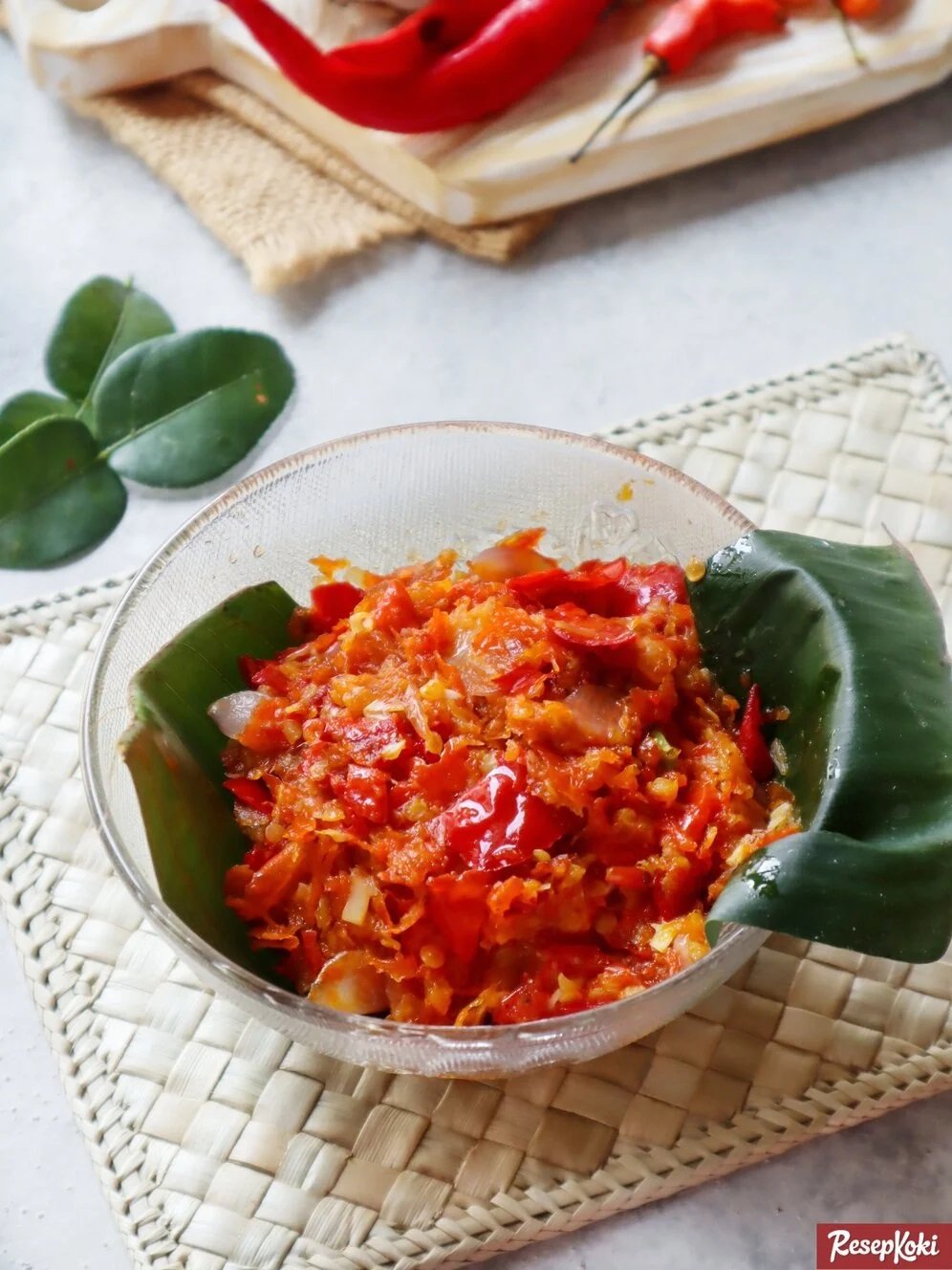
Photo by ResepKoki
Sambal rica-rica also comes from Manado. This sambal is a chili sauce that can be mixed into various dishes. The taste of this chili sauce is quite spicy in accordance with the typical taste of Manado cuisine which is dominantly spicy. Sambal rica-rica is also known as sambal ‘goreng’ because the process of cooking this sambal uses a frying technique. Not only does it have a spicy taste, but the sambal rica-rica also has an appetizing aroma because the mixture of red chili sauce is added with lime leaves, lime juice, ginger and lemongrass.
15. Sambal Pecel
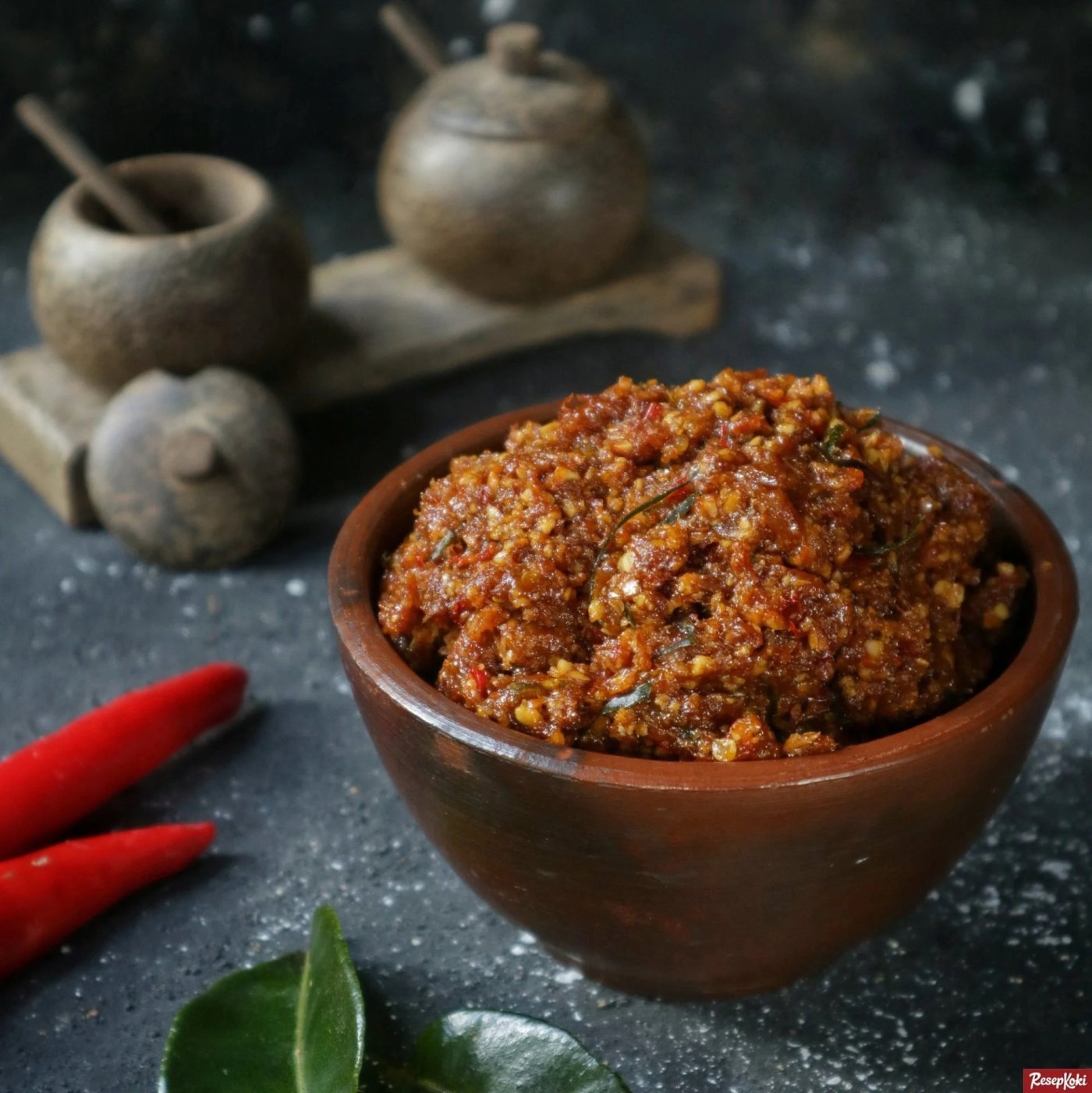
Photo by ResepKoki
For those of you who have been to the East Java area, you must be familiar with the pecel menu. This dish from East Java consists of a variety of steamed vegetables, tofu, and fried tempeh. Then, the ingredients are doused with sambal pecel made from ground peanuts, brown sugar, red chilies, tamarind, garlic, lime leaves, and salt.
16. Sambal Tumpang
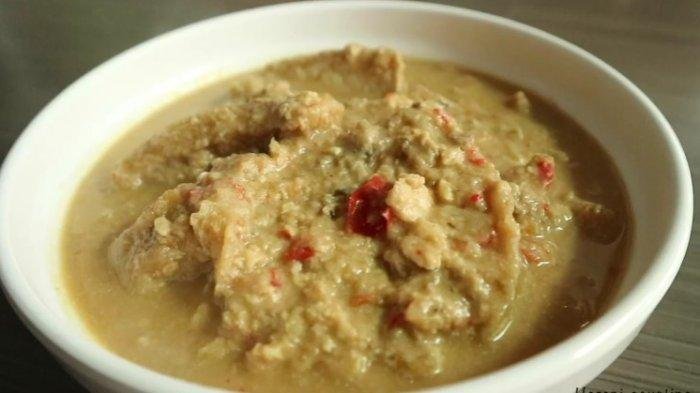
Photo by Tribun Jateng
Another kind of sambal in the archipelago is sambal tumpang. Sambal overlap is made from chili sauce added with tempe bosok. Tempe bosok means tempeh that is almost rotten. Sambal tumpang is famous in East Java. Sambal tumpang can be said that its appearance is not as common as chili sauce. This sambal looks more like a thick soup dish. The taste of the sambal tumpang is slightly sour and has a strong smell of the typical smoked aroma of tempe bosok.
17. Sambal Kandas
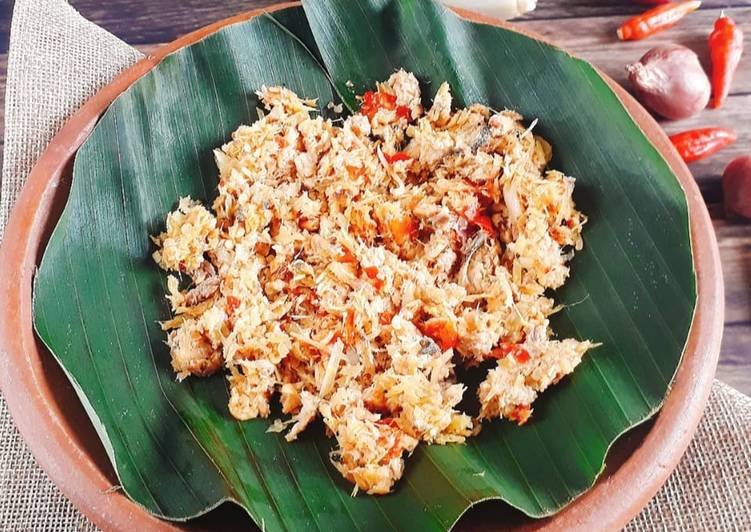
Photo by Menu Resep Makanan
Turning to the island of Borneo, the Dayak tribe has a run-of-the-mill chili sauce which is their mainstay. The smell of this chili sauce is very fragrant. Naturally, to make sambal kandas, you need a lot of lemongrasses. The lemongrass is then sliced thinly, and pulverized with cayenne pepper, shallots, grilled shrimp paste, salt, and flavorings. If it is mixed, then shredded grilled fish or fried fish can be added and stirred until smooth. This sambal tastes delicious even if only eaten with warm rice.
18. Sambal Gandaria
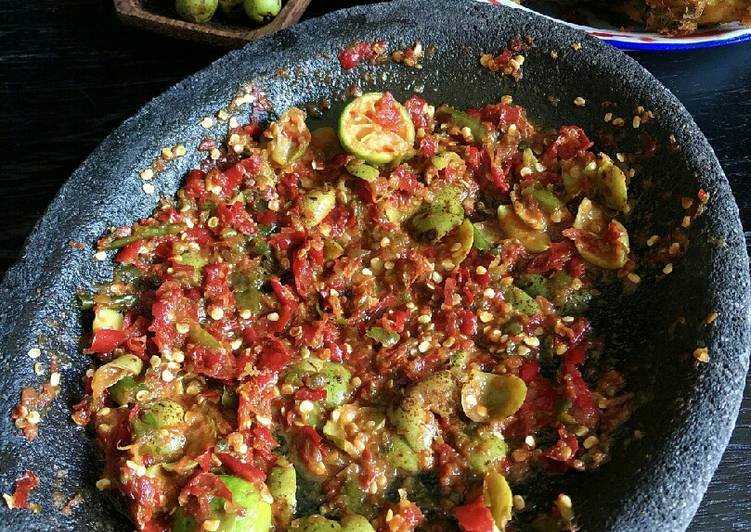
Photo by Resep.us
This gandaria fruit turned out to be an iconic fruit from West Java which then spread throughout the archipelago. The appearance of this gandaria fruit at a glance is similar to mango, but comes in a small size, and tastes sour and sweet. Who would have thought, this gandaria fruit is also suitable to be eaten with chili sauce. The recipe is very practical, you only need to prepare curly red chili, shrimp paste, sugar, and salt. All these ingredients can be kneaded until smooth, then added the chopped gandaria.
19. Sambal Plecing
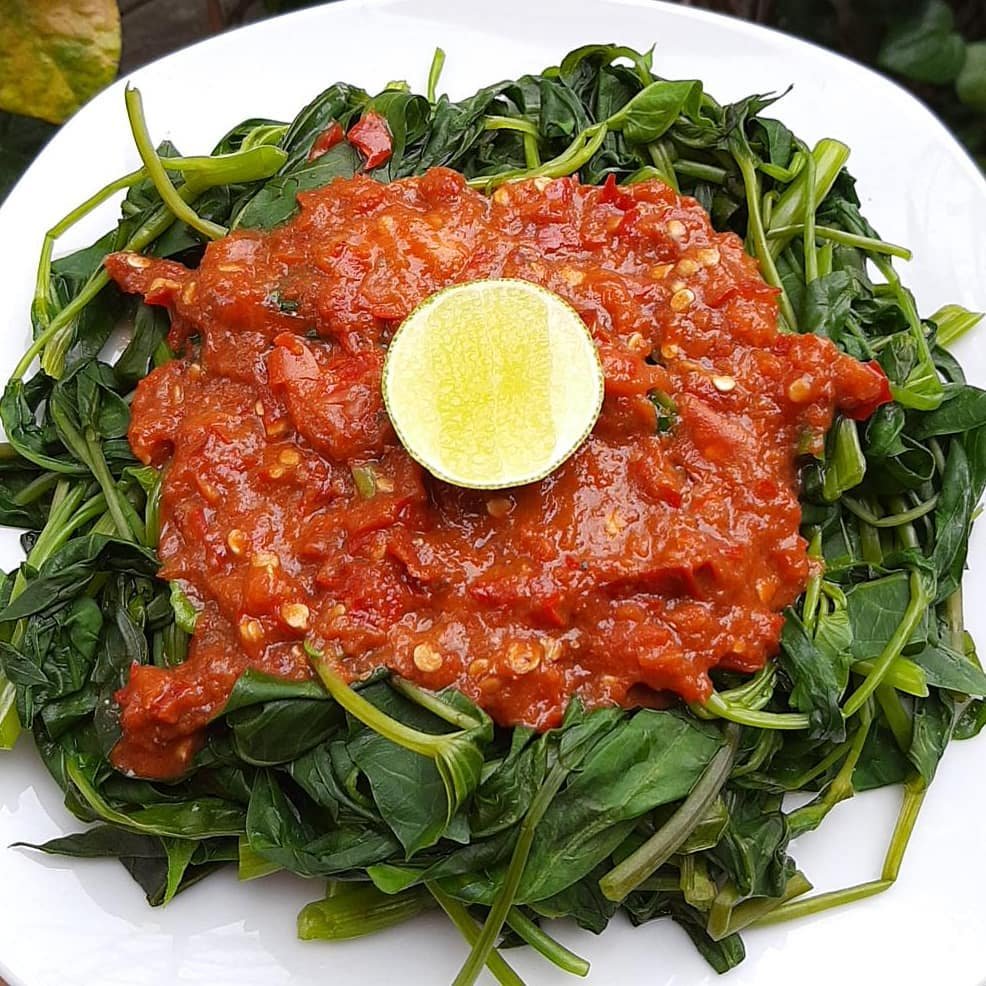
Photo by Piknikdong
This sambal is a typical chili sauce from Lombok. Sambal plecing is practically the same as chili paste because it adds shrimp paste to the mix. However, for the taste, there is a special taste in shrimp paste. This sambal is most often served in plecing kale dishes. In the concoction, tomatoes and lime juice are also added so that the chili sauce is a little runny.
20. Sambal Embe
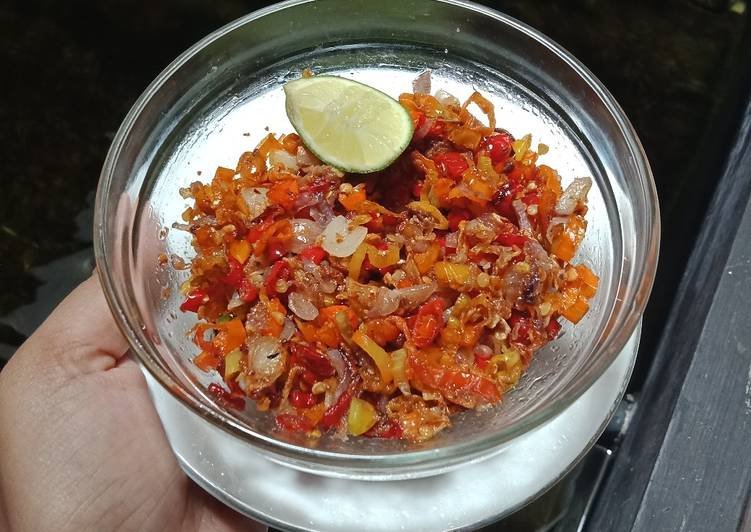
Photo by Serba Sambal Sedap
Another kind of sambal in the archipelago is sambal embe. Sambal Embe is also a chili sauce originating from Bali. Sambal embe or mbe is made from the main raw materials in the form of chili, shallots, and shrimp paste. All ingredients for sambal embe are processed only by being sliced and sauteed until cooked.



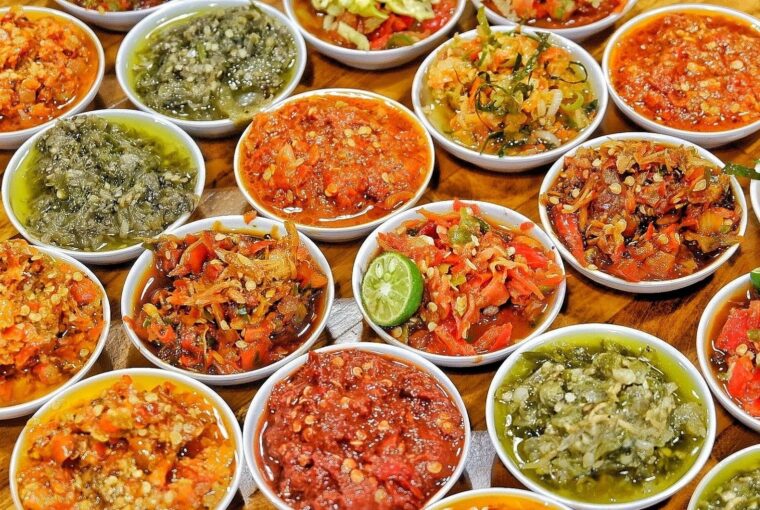
 Chyntia .DW
Chyntia .DW
 Jun 19, 2024
Jun 19, 2024